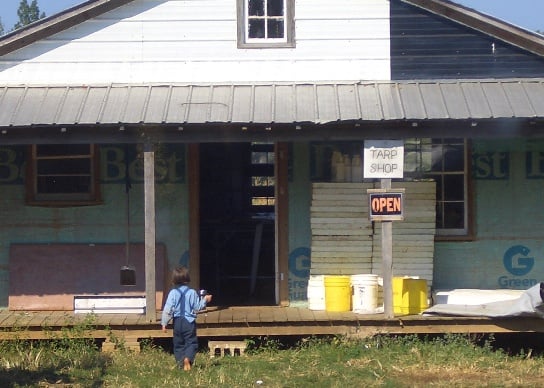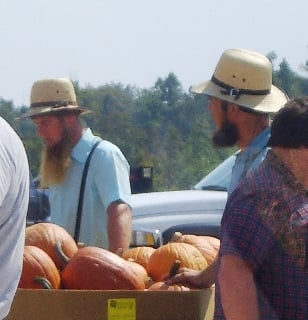Again Im So Distance From Falmouth Kentucky to Florence Kentucky
Over the past 2 decades, Kentucky has had one of the fastest-growing Amish populations
![]() Kentucky is home to a sizeable and growing Amish population. Amish did not arrive to the state until the mid-20th century. Since that time the Amish population has rocketed to become the 8th-largest in North America. Today, around 8,000 Amish (62 church districts) are found in 30+ settlements (Young Center 2010).
Kentucky is home to a sizeable and growing Amish population. Amish did not arrive to the state until the mid-20th century. Since that time the Amish population has rocketed to become the 8th-largest in North America. Today, around 8,000 Amish (62 church districts) are found in 30+ settlements (Young Center 2010).

A conservative Amish settlement is found in Hardin County, KY
Kentucky Amish settlements include:
- Munfordville/Horse Cave-The Munfordville community is the largest in Kentucky, and one of the fastest-growing in the nation.
- Guthrie-The area near Guthrie in southern Kentucky is home to a small "electric New Order" group
- Christian County-2 separate Amish settlements along with an Old Order Mennonite community call Christian County home
- Other small settlements-Kentucky is dotted with small communities; Amish are found in nearly two dozen of the state's counties
Munfordville/Horse Cave
The Amish settlement in Hart County, found near the towns of Munfordville and Horse Cave, was started in 1989. This community has ties with the Geauga County Amish settlement in Ohio. The Munfordville settlement has grown rapidly over the past two decades, and numbered 13 church districts as of 2010 (about 1,600 people).
In comparison, another community founded the same year in Christian County, KY, is less than half the size. Munfordville has benefited from a high level of in-migration of Amish from other communities, including its large parent settlement of Geauga County (note: though Munfordville is used to describe this community, there are no Amish actually in the town, it simply refers to one of the most common mailing addresses for area Amish).

Amish at the Hart County produce auction
Amish at Munfordville operate small businesses and farm. The hilly terrain is not the best farmland, but Amish do operate traditional farms as well as grow produce. The local produce auction runs on weekdays at 1pm.
A number of shops, including furniture businesses and retail stores provide ways of making a living for the Amish (more on Kentucky Amish furniture). Detweiler's Country Store, near Cub Run, is a well-known variety store with gardening amenities, books, foods, and dry goods. Amish-run sawmills and fabric shops can be found dotted among the Hart County hills as well.
Traveling in Hart County by buggy can be hazardous. Like the Amish community at Holmes County, Ohio, Hart County is hilly. In some places you will find buggy pull-off lanes, usually on steep hills, which provide a shoulder for buggies to pull over and allow vehicles traveling behind to pass.
Read more on the Munfordville, KY Amish.
Guthrie
The lands near Guthrie in Todd County are home to an unusual community of "electric" New Order Amish. New Order Amish on the whole make up only a small minority within Amish society.
Though they dress plain, use the horse-and-buggy, and speak Pennsylvania Dutch, New Order Amish in general differ somewhat from Old Order Amish. New Order Amish tend to have a greater focus on missions and outreach, are generally liberal on technology, believe in assurance of salvation. Some groups also hold Sunday School.
New Order Amish are themselves divided into two groups: "electric" and "non-electric". Electric New Order Amish differ from non-electric New Orders in that they permit electricity to be used in the home.
Guthrie Amish are also very progressive when it comes to tractor usage. Tractors are driven on the road; most Amish homes can be identified by the bright blue or red tractor parked outside. Buggy usage is limited compared to other Amish settlements. As a result, Guthrie homes are more spread out than one might expect for a settlement of this size.

Amish at Guthrie, Kentucky make extensive use of tractors
The Guthrie community is the oldest in Kentucky, founded in 1958. Today it numbers just 3 church districts in size. Guthrie Amish originate from a now-defunct Amish church at Stuarts Draft, Virginia (GC Waldrep, "The New Order Amish and Para-Amish Groups", Mennonite Quarterly Review July 2008 p. 399). Guthrie Amish maintain ties with other communities, such as the electric New Order Amish church at Union Grove in North Carolina.
Christian County
Christian County is home to 2 Amish settlements: the second-oldest in the state, near Crofton (founded 1972, 2 church districts), and a newer and larger settlement near Hopkinsville and Pembroke (1989, at 5 districts the state's second-largest).
Crofton is an electric New Order settlement, of similar size to that at Guthrie in neighboring Todd County (see Guthrie Amish above). Christian County, along with Todd County, is also home to a community of Old Order Mennonites. Todd County is also home to a sizeable produce auction (Fairview, at Elkton) where both Amish and Mennonites sell their fruits and vegetables.
Other Kentucky Amish communities
Numerous smaller settlements are found across the state. Marion in Crittenden County is home to the third-oldest Kentucky settlement, founded in 1977 and with 4 church districts today. Barren County is home to a pair of settlements founded in the 80s.

Amish buggies share the road with tractor trailers in rural Hardin County, KY
In addition to Guthrie and Crofton, a third, smaller electric New Order settlement can be found at Princeton in Caldwell County.
On the other end of the spectrum, Kentucky is also home to a few ultraconservative Swartzentruber Amish settlements, one found in Hardin County near Sonora, and a second in Graves County near Mayfield.
Other Kentucky counties with Amish settlements include Lincoln, Logan, Fleming, Casey, and Breckinridge Counties. With its wide range of affiliations, Kentucky is a state which showcases the diversity of Amish society (see David Luthy, Amish Settlements Across America: 2008).
Kentucky, home to a rapidly-growing Amish population
All Kentucky Amish settlements except for the Guthrie community have been founded during the last 40 years.

A home in the young Swartzentruber Amish settlement in Graves County
Kentucky's attractive location and relatively low land prices have led large numbers of Amish to settle the state.
According to the Young Center for Anabaptist and Pietist Studies, Kentucky has been the fastest-growing state of Amish populations of significant size.
Between 1991 and 2010, the Kentucky Amish population grew by 226%. This is in large part due to high in-migration, which has continued at a high rate in recent years.
For further information, see:
Amish Settlements Across America: 2008, David Luthy
The New American Almanac 2010, Raber's Bookstore (Baltic, Ohio), Ben J. Raber
"Amish Population by State (2010)" and "Amish Population Change 1991‐2010" Young Center for Anabaptist and Pietist Studies, Elizabethtown College(http://www2.etown.edu/amishstudies/Population_by_State_2010.asp; http://www2.etown.edu/amishstudies/PDF/Statistics/Population_Change_1991_2010.pdf)
"The New Order Amish and Para-Amish Groups", G.C. Waldrep, Mennonite Quarterly Review July 2008
"Produce Auctions Continue to Grow"; University of Kentucky College of Agriculture, Laura Skillman
Amish America blog: "The Amish of Munfordville, Kentucky"; "Graves County, Kentucky Amish"
Photo credits: Hardin County buggy-hikinghillman; Graves County-Brett
You might also like:
Question on the Amish? Get answers to 300+ questions in 41 categories at the Amish FAQ.
Source: https://amishamerica.com/amish-kentucky/
Post a Comment for "Again Im So Distance From Falmouth Kentucky to Florence Kentucky"